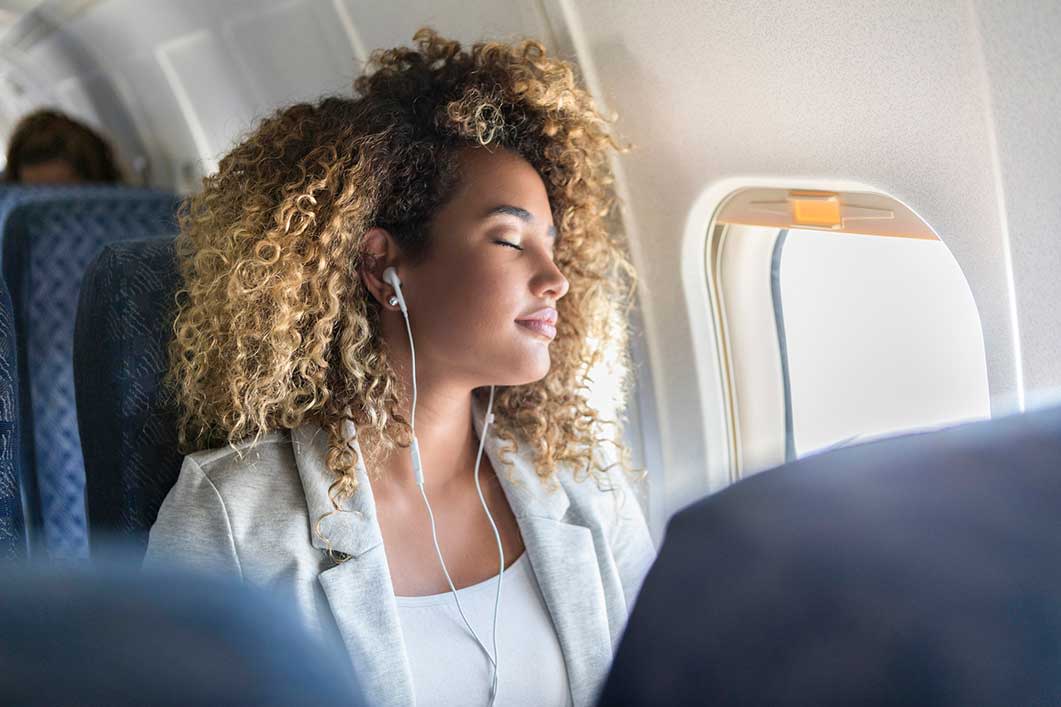Read Time: 4 min | Categories: Body Health
5 Ways to Beat Motion Sickness
Patience Lister, BSc
Share this article
Motion sickness can quickly turn a fun trip into an uncomfortable experience, and in some cases, halt it altogether.
It develops when your central nervous system receives mixed messages from sensory systems such as the inner ear, eyes, and muscles. This typically happens on moving cars, boats, and trains, and can result in symptoms such as nausea, vomiting, sweating, dizziness, and headaches.
Luckily these symptoms are generally mild and temporary, but having strategies to help prevent motion sickness can help your next trip run more smoothly.
Has motion sickness stopped you from enjoying life’s adventures? Here are 5 key ways you can beat motion sickness:
Tip #1 – Get plenty of rest the night before your trip. Try to be in bed a little early to get a good night’s sleep, aiming for at least seven to nine hours of shut eye. In case of jet lag, consider using melatonin to help increase your total sleep time and reset your body’s internal clock.
Tip #2 – Get as much fresh air as possible before your trip. Whether you are inside or outside, breathing techniques such as taking slow, deep breaths can help to reduce symptoms of motion sickness. [1]
Tip #3 – Discover the benefits of ginger. Ginger has been clinically shown to reduce symptoms associated with motion sickness and seasickness, such as nausea and vomiting. [2],[3]
In herbal medicine, ginger can also help relieve digestive upset including lack of appetite, digestive spasms, and indigestion, making ginger a helpful travel remedy.
Ginger can be used in different ways – try chewing a small piece of fresh ginger root, drinking ginger tea, or taking a standardized ginger extract 30 minutes before traveling to your next destination.
Tip #4 – Stay hydrated. Dehydration can make nausea worse, so it is important to begin your trip well-hydrated. [4] You can help maintain hydration by avoiding alcohol and caffeine and taking frequent sips of water throughout the day.
Additionally, keep your electrolyte levels balanced by eating small meals and snacks of easy-to-digest foods, such as toasts, bananas, and clear soup broth.
Tip #5 – Use anti-nausea or acupressure wristbands to reduce symptoms. Acupressure can be used to aid nausea and vomiting through the Nei guan (or Pericardium 6) acupoint.
A simple way to do this yourself is by wearing anti-nausea wristbands that stimulate this pressure point before the onset of symptoms. [5] On both wrists, place the band with its nodule between the two tendons found about three finger widths up from your inner wrist crease.
Take Control of Motion Sickness
Other tips to help minimize your risk of feeling motion sick include sitting in a forward facing direction while in vehicles and on trains, not reading during a trip, sitting in the front seat of a car, and being the driver whenever possible.
Supplementing with a concentrated ginger extract can be an extremely useful way to relieve motion sickness without drowsiness. Rather than acting on the brain or inner ear, ginger is believed to exert its effects by reducing the excessive gut motility and churning that aggravates motion sickness. [6]
Ginger is approved by Health Canada for the treatment and prevention of nausea and vomiting associated with motion sickness, in addition to traditional use as a digestive aid.
Motion sickness is an awful feeling and in extreme cases debilitating. Thankfully a few mindful actions and a well-packed travel kit that contains water, light snacks, anti-nausea wristbands, and ginger supplements can go a long way to reducing your symptoms and creating a more enjoyable experience.
Disclaimer: This information is provided for educational purposes only and is not intended for self-diagnosis or self-treatment of conditions that should be interpreted and managed by a qualified health care provider.
